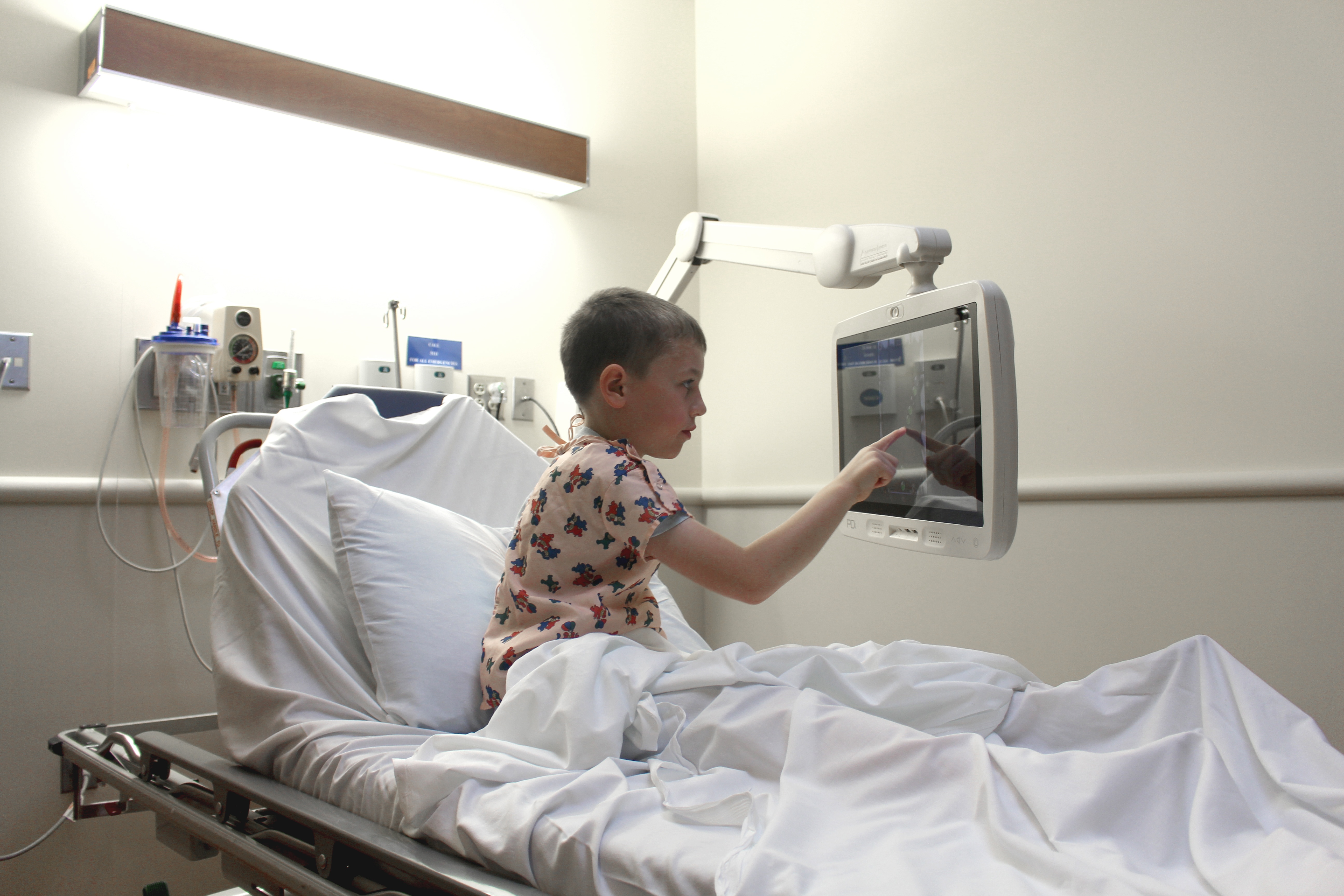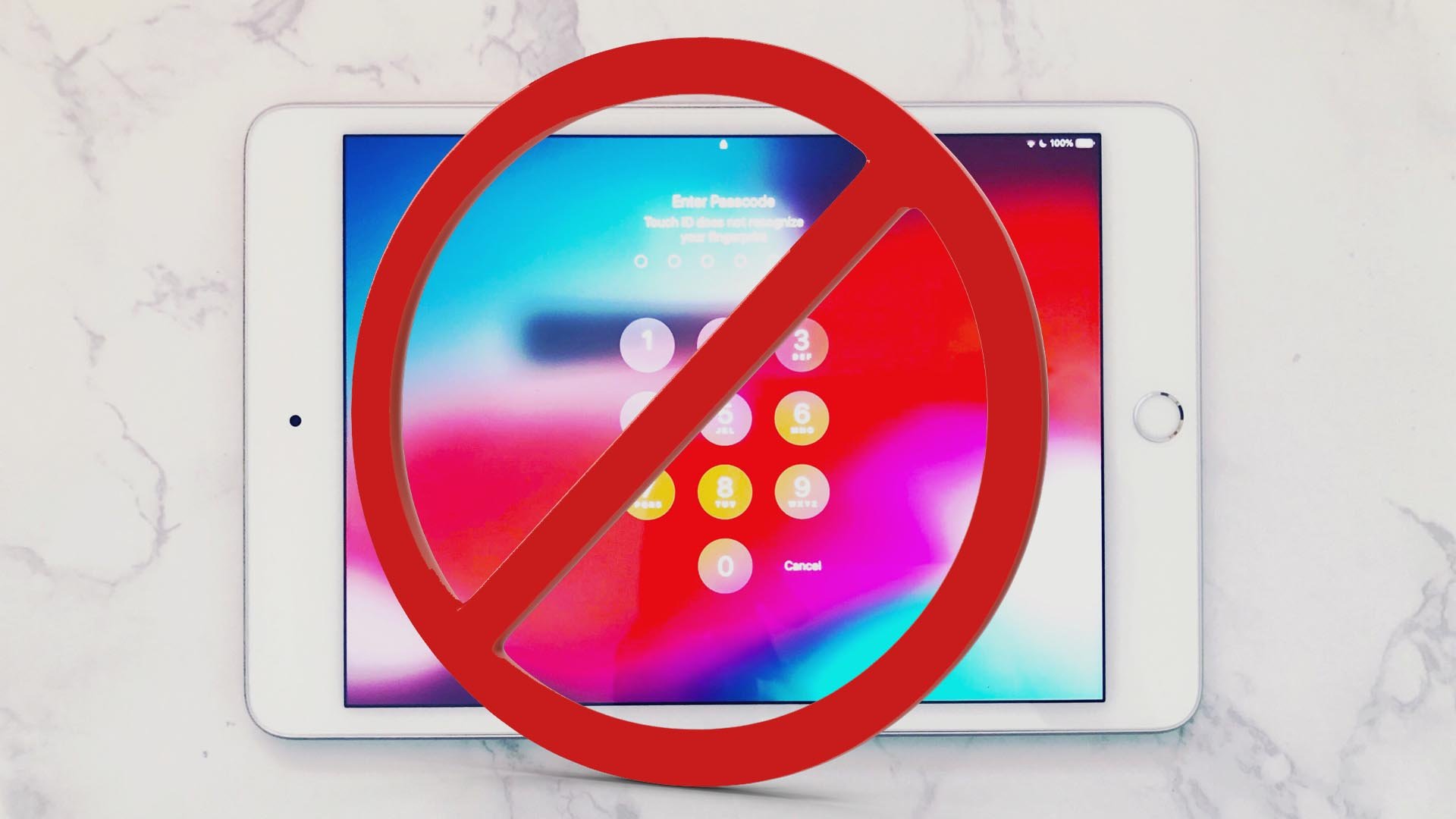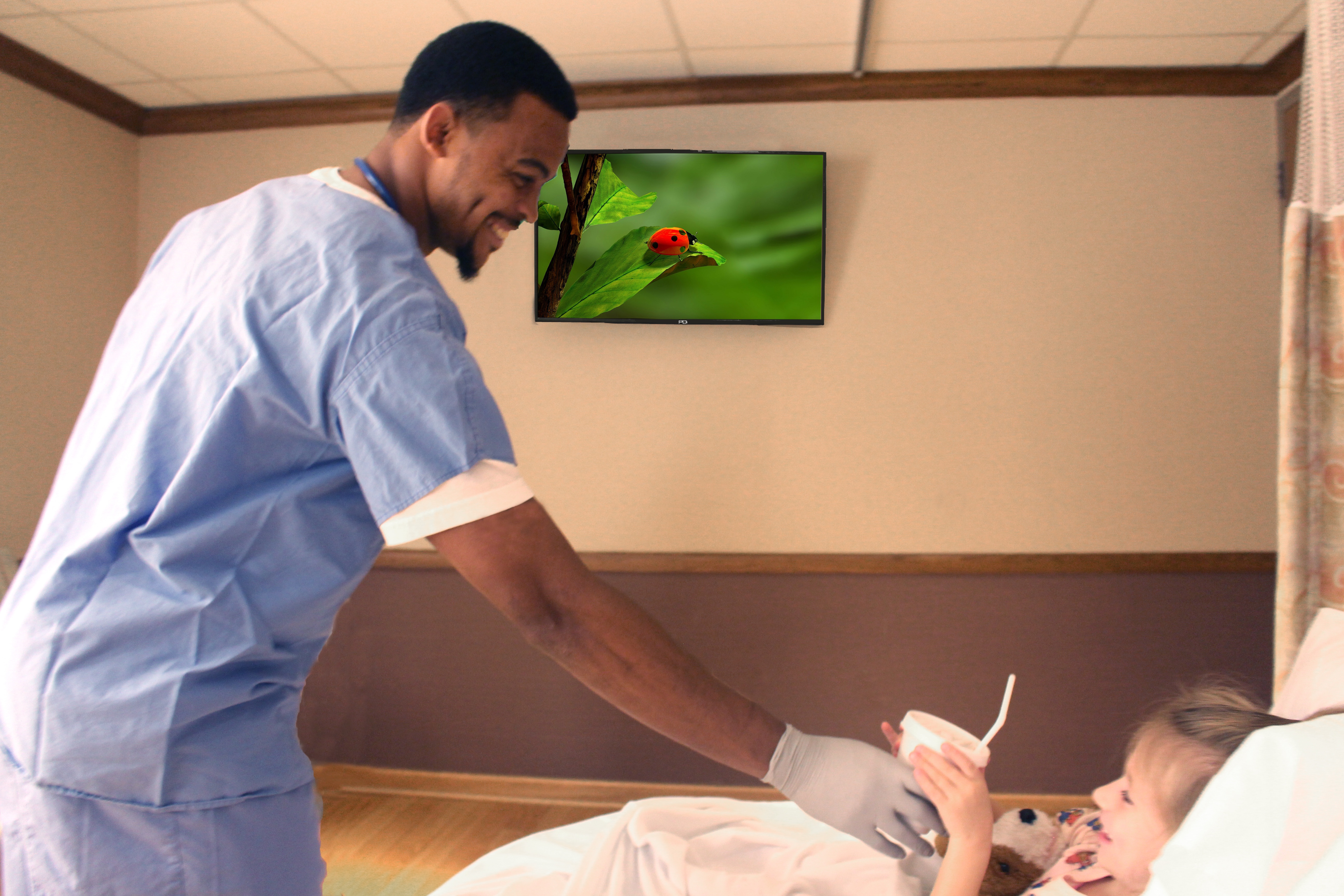5 min read
Why iPads are Bad for Patient Experience and Patient Safety
Patients can easily feel lonely during infusion therapy or a hospital stay. Healthcare organizations can help ease this loneliness by providing...

Previously, we discussed the experience of a large-screen footwall patient TV and considered the user experience of a hand held tablet. Here, we will look at placing an interactive patient tv at the bedside.
An alternative path to improve patient engagement and satisfaction is to mount a personal smart, touch screen TV on an arm to provide full range of motion close to the bedside for the patient. This approach successfully bridges the interaction gap created by having footwall TVs across the room, and it solves some of the issues associated with consumer tablet risks.
A myth about arm-mounted patient TVs is the viewing experience on a 16” display mounted on an arm isn’t as good as a 43” big screen. Bigger is better right?
In fact, the opposite is true. Mathematically speaking, a 16” TV display within arm's reach of the patient is equal to a whopping 90” screen viewing experience across the room! The close proximity also encourages patient engagement with the device. Such a screen size as 90" is undoubtedly impractical to match in a hospital room, but the personal TV delivers that experience to satisfy patients.
The only downside is that guests visiting the patient may not have a great view of the screen. However, a well designed room can allow for flexibility from bedside to guest chair if the designer anticipates this.
Another advantage of a good bedside TV is it reduces risks in significant ways. The touch screen device is continuously charged so the patients and staff never need to worry about batteries or charging the device. The device is securely mounted so it cannot be damaged and deters theft.
Additionally, the arm-mounted set can reduce risks of infections as the permanently installed device is cleaned as part of the housekeeping workflow. Ask your healthcare TV manufacturer of this type of bedside TV if they use antimicrobial powder-coatings.
Touch navigation is a natural way for patients to adopt and use their patient portal and access their Electronic Health Records (EHRs.) This can give the patient a sense of personal ownership with their device, and with access to their healthcare information it provides a sense of control and creates patients who become actively involved in their care.
The negative aspects that relate to a personal arm mounted TV come down to cost and patient room design. The cost of a footwall TV is distinctly lower because the purchaser now must buy the hardware to mount an arm and TV instead of just a TV. But if one considers and measures workflow time savings from smart TVs, the benefits outweigh the cost.
The other roadblock comes from the space available in the patient room to set up such a system. Generally, an arm-mounted TV would be attached at the head wall. Of course, it varies on the type of patient room setting, but medical equipment is often placed there as well.
The concern is raised that the TV system may get in the way of nurses and doctors giving the patient care in critical conditions. This is something the designer of the patient room will want to consider as they plan.
The heart of the matter is to consider how to deliver the interactive patient system in a personal way to improve the patient's overall experience.
There are obviously many factors to consider when selecting a patient engagement system and how the experience is delivered. It would be unwise to select a one-size-fits-all solution for the entirety of a facility. It is best to approach the project with the question, “What application provides the most value to the patient and which solution will be the easiest to get patients engaged?”
The goal to strive for is to find the most personal approach to naturally foster usage by the patient. By recognizing the strengths and weaknesses of every delivery mechanism on the market, healthcare providers can prescribe and deliver interactive patient systems. This creates the best environment to entertain and educate the patient as they heal.
What are some other positive or negative aspects of bedside patient tvs? Let us know what you think in the comments below!

5 min read
Patients can easily feel lonely during infusion therapy or a hospital stay. Healthcare organizations can help ease this loneliness by providing...

1 min read
Part 1 of "Different Angles of Patient Engagement" Blog Series In an effort to mirror the average patient's home environment, many healthcare...

4 min read
When it comes to their care, what do patients actually say about what they want?